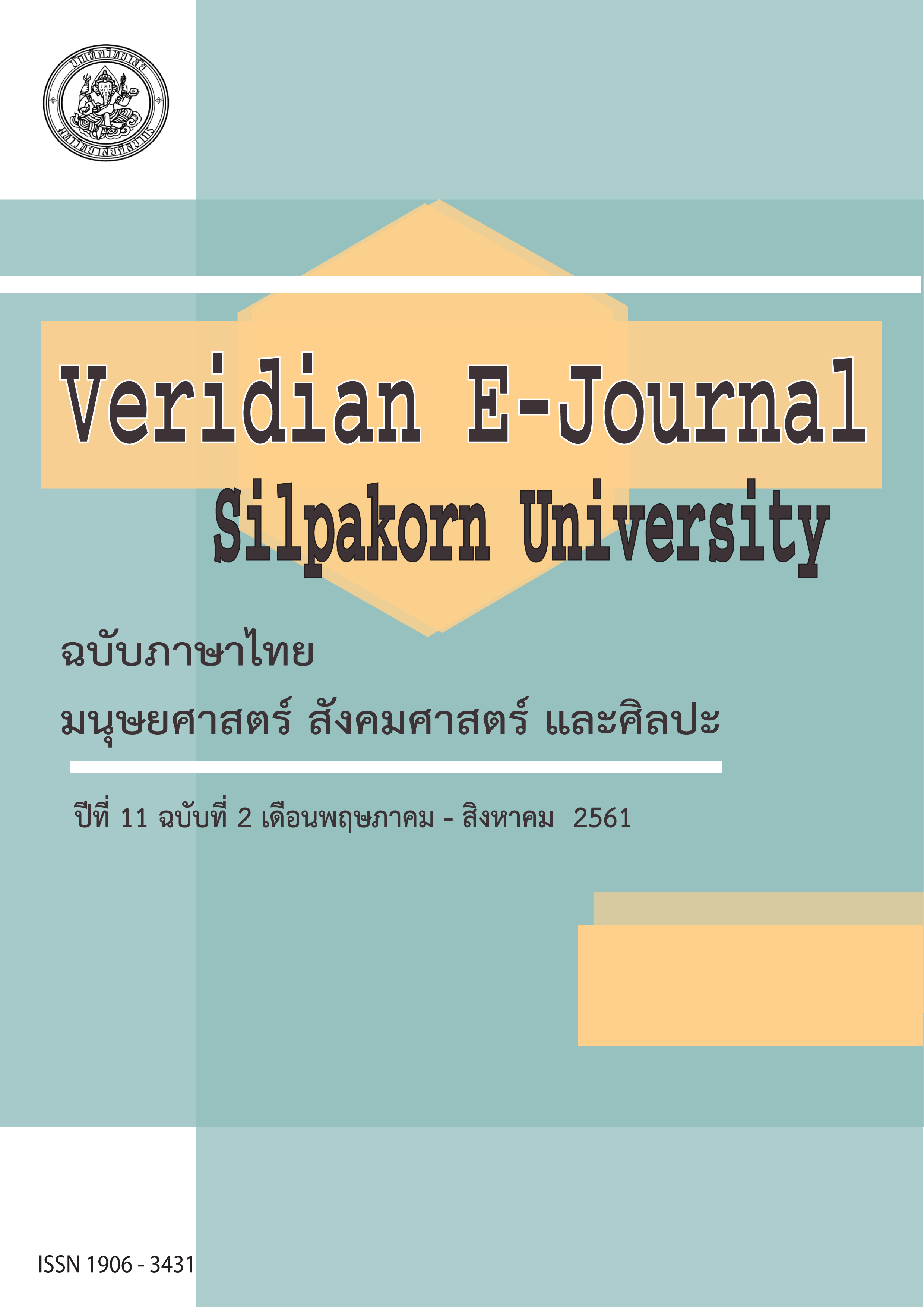แนวคิดใหม่เกี่ยวกับพัฒนาการทางวัฒนธรรมของเมืองโบราณอู่ทอง (A Reappraisal of Ideas on the Cultural Development of the Ancient City of U-Thong)
Main Article Content
Abstract
นักวิชาการในอดีตส่วนใหญ่มีความเห็นว่า ชุมชนโบราณที่เมืองอู่ทอง จังหวัดสุพรรณบุรี คงมีฐานะเป็นเมืองท่าสำคัญในยุคหัวเลี้ยวประวัติศาสตร์หรือช่วงก่อนสมัยทวารวดี และเป็นเมืองหลวงระยะแรกของรัฐทวารวดี ในช่วงประมาณพุทธศตวรรษที่ 9-13 อย่างไรก็ตามจากการศึกษาวิเคราะห์หลักฐานทางโบราณคดีร่วมกับข้อมูลด้านจารึกและศิลปกรรมกลับพบว่า ชุมชนโบราณที่เมืองอู่ทองน่าจะมีความเจริญรุ่งเรืองสูงสุดในช่วงสมัยทวารวดีตอนกลาง ประมาณพุทธศตวรรษที่ 13-15 โดยปรากฏอิทธิพลของพุทธศาสนานิกายมหายานอย่างเด่นชัด และมีหลักฐานของการค้าขายแลกเปลี่ยนกับต่างถิ่น ทั้งกับ ศรีวิชัย อินเดีย (ราชวงศ์ปาละ) จีน (สมัยราชวงศ์ถัง) และตะวันออกกลาง (สมัยราชวงศ์อับบาสิยะฮ์) ดังนั้นการเจริญขึ้นของพุทธศาสนานิกายมหายานที่ดำเนินควบคู่ไปกับความมั่งคั่งทางการค้าบนเส้นทางสายไหมทางทะเล จึงเป็นปัจจัยหลักที่ทำให้ชุมชนโบราณที่เมืองอู่ทองและชุมชนร่วมสมัยแห่งอื่น ๆ ในภาคกลางของประเทศไทยเติบโตขึ้นอย่างมากในช่วงกลางของสมัยทวารวดี
Most previous scholars usually suggested that the ancient city of U-Thong, in Suphan Buri Province, was a major port in the proto-historic or pre-Dvaravati period and it was an early capital of Dvaravati state during the 4th-8th centuries. However, from the new archaeological analysis show the period of prosperity of ancient U-Thong occurred during the middle of Dvaravati period about the 8th-10th centuryz. The influence of Mahayana Buddhism is evident at U-Thong in this period and many archaeological finds of external trade with Srivijaya, India (Pala Dynasty), China (T’ang Dynasty), and Middle East (Abbasid dynasty) were also found. Thus, the rise of Mahayana Buddhism, coupled with the economic prosperity along the maritime silk road, is the main factor that made ancient U-Thong, and other contemporary communities in Central Thailand, grow significantly in the middle of the Dvaravati period.

